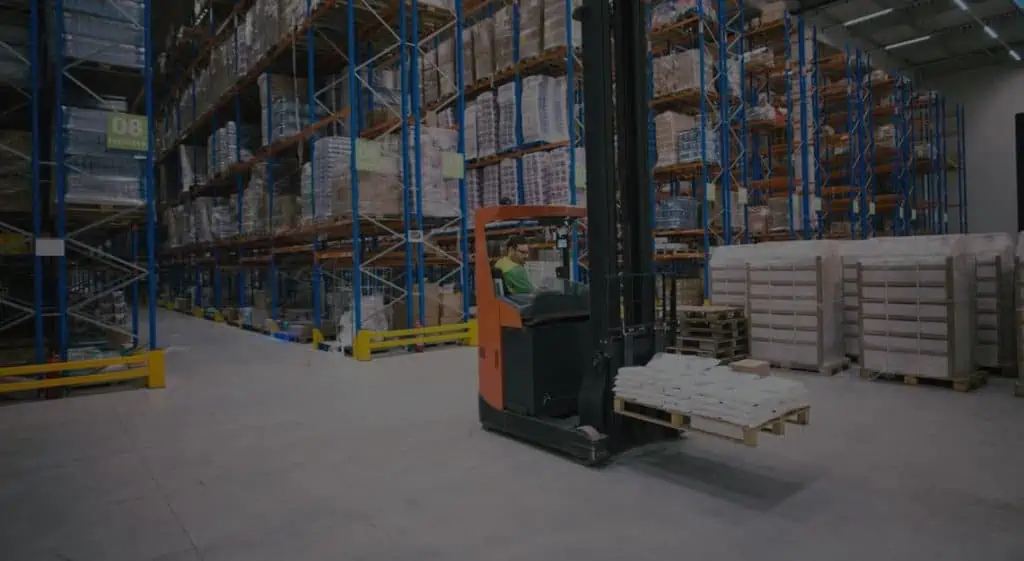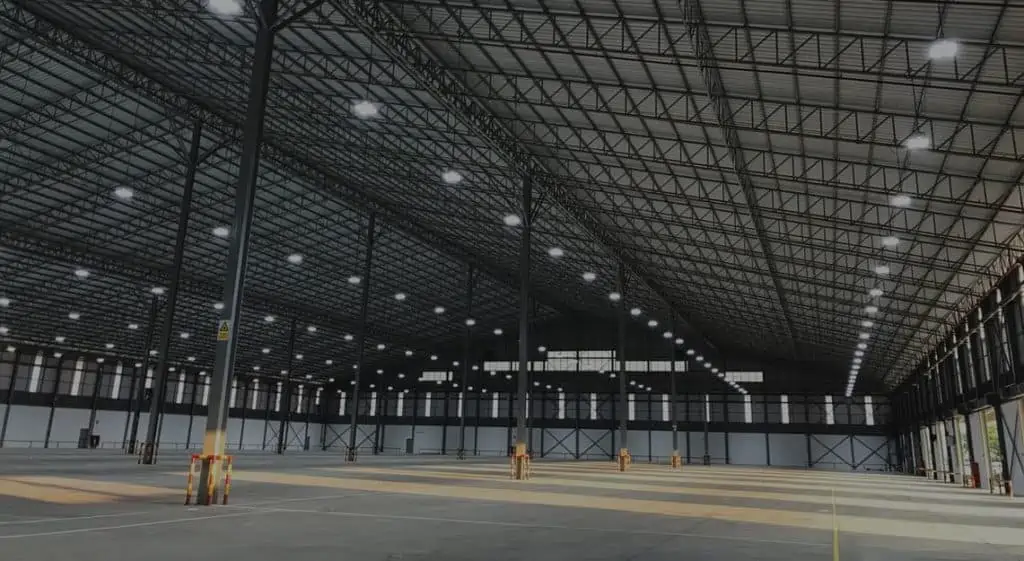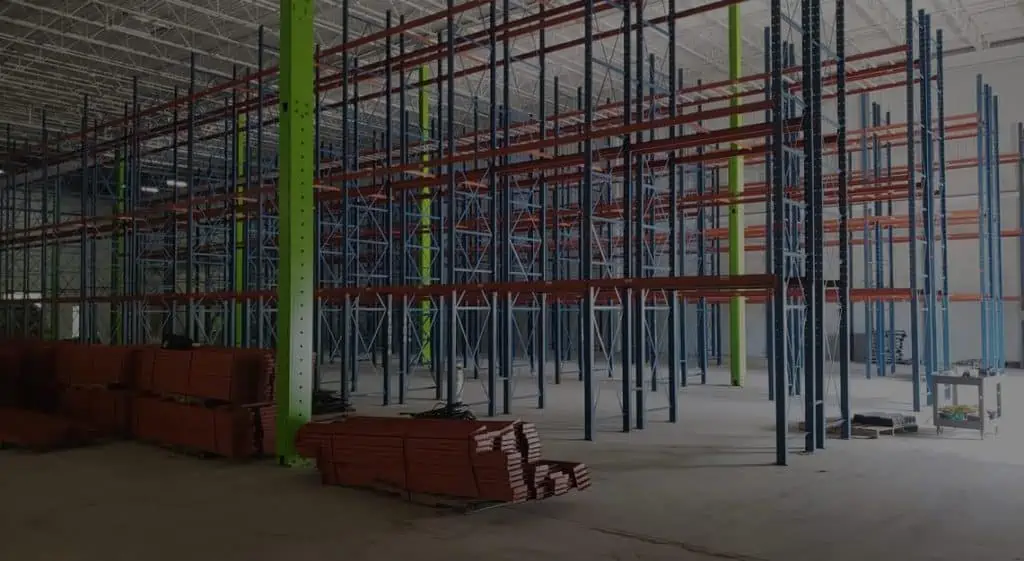Warehouse Transition Plan: What to Know Before You Move
There’s no other way to say it: moving to a new warehouse is hard. You have to find the new facility, tear down your equipment, organize and pack your inventory, and transport and install your equipment — all while keeping your employees busy and your head above water.
Yes, the steps to move a warehouse are numerous and complicated. But as is the case with many other difficult tasks, you can make this easier if you have a detailed plan. A thorough warehouse transition plan can mean the difference between chaos and smooth sailing in your warehouse move.
One of the key objectives we have at East Coast Storage Equipment is to make warehouse transitions easier. To further that goal, we have put together this warehouse moving guide. Read on to learn what you need to know before you move.
We can help you with every phase of your warehouse transition, from equipment teardown to transportation to installation. Ready to make this move as easy as possible? Contact us.
Questions to Ask Before Your Warehouse Move

In the early stages of a warehouse move, you need to ask yourself and your team a few key questions. The answers to these questions will help you get everything in order as you move forward.
Here are some of the questions you need to ask and answer before you make your warehouse transition plan:
- What benefit does this warehouse move provide to our business?
- Who needs to know that our warehouse is moving?
- What part will each team member play in this move?
- Will we need to pause all business during the move? If so, for how long?
- Can we save money by moving our old equipment, or do we need to liquidate it and start fresh?
- Does the new warehouse have enough space for our equipment and inventory?
- Does the new warehouse have space for us to grow?
- Do you have a warehouse relocation checklist?
There are no wrong answers to these questions. You simply need to have the answers and begin your warehouse transition with them in mind.
Phases of a Warehouse Transition Plan
We will go into more detail about the steps to move a warehouse a little later, but first, we need to discuss the three basic phases of a warehouse transition plan. They include the following:
- Equipment teardown
- Equipment relocation
- Equipment installation
Of course, there are many more bits and pieces to account for in your plan. But because your racks, steel mezzanines, conveyors and similar warehouse equipment are your largest and most valuable items, they need to be at the center of your moving plan.
Equipment Teardown
Some of the equipment in your warehouse might have been in the same spot for years, but you need to be able to tear it down and position it for easy transportation. This is true whether you’re moving across town or across the country.
You also need to decide whether your team has the time, manpower and knowledge to safely tear down the equipment. If the answer is no, consider hiring a warehouse equipment teardown specialist.
Equipment Relocation
Actually getting your warehouse equipment to the new facility can make the teardown phase feel like a walk in the park. The tools and vehicles required to transport large warehouse equipment are expensive and often hard to operate. Do you have these tools, or will you need to rent them or higher someone who has them? And do you have the proper licenses and permits to get the job done safely?

Equipment Installation
When your equipment arrives at your new warehouse location, you’ll probably want to breathe a sigh of relief. Unfortunately, you’re not done yet. You still have to get the equipment into its new place inside the facility, properly secure it and get it operational.
If you had outside help with equipment installation in your previous facility, you likely don’t know exactly how to install all of the equipment you own. In such a case, it may be worthwhile to work with a company that specializes in warehouse equipment installation.
Steps to Move a Warehouse
With those primary phases of your warehouse transition plan in mind, let’s get into the actual steps to move a warehouse. We’ve broken the process down into 10 simple steps that you can use as your go-to warehouse move checklist.
1. Arrange for Equipment Relocation
This isn’t a mistake — you need to plan the actual moving of your warehouse equipment really early. That’s because this process involves some serious logistics planning, and if you work with a warehouse moving company, they may be fully booked months in advance.
2. Organize Your Inventory
Your inventory may be easier to move than your warehouse equipment, but you can’t just toss it on a truck and take off. Make sure your inventory is organized (and trim it where you can to reduce moving costs) so you can unload it and get to work without losing productivity or profit.
3. Plan Work Schedules
Your warehouse employees will likely help you prepare for the move, but what happens during the move? Make sure your team knows what to expect in terms of downtime, loading and unloading and any work that involves equipment teardown or installation.
4. Consider the Layout of the New Warehouse
Hopefully, you’ve already thought a lot about the layout of your new warehouse, but this is the time to give it even more thought. Where can you put each piece of equipment to maximize productivity and reduce headaches? In the locations you’ve chosen, do you have the proper hookups, walls, supports and space (both vertical and horizontal) to install the relevant equipment? Make sure you know exactly where you want everything to go before moving day.

5. Think About the Future
In a similar vein, you need to plan for the future. Does the new warehouse have room for your company to grow? If growth is in your business plan, the new warehouse needs to be able to accommodate it. Think about how you can use and conserve space to avoid growing pains.
6. Communicate with Customers and Vendors
Here’s what you really don’t want after you move: a vendor shows up at your old location, only to find you missing. Vendors, customers and all the people who regularly interact with your business need to know you’re moving. Don’t forget to update your address and phone number in all business listings.

Looking for A Smooth Transition?
At East Coast Storage Equipment, we can make your warehouse transition seamless with our professional relocation services.CONTACT US
7. Get the Info on the New Location
Your new warehouse is going to have some quirks and specific details that you need to both write down and commit to memory. Get the lowdown on the following details and share them with everyone who needs to know:
- Keys and door protocols
- Security codes
- Parking for employees and visitors
- Internet access
8. Tear Down Your Warehouse Equipment
This is when the real work starts. Depending on the size of your warehouse, give yourself at least a couple of days to tear down all of the equipment and get it ready to load onto the trucks.
Planning when to tear down your warehouse equipment is an art. Do it too soon, and you lose productivity for days or weeks. Do it too late, and you might not be ready in time for moving day.

9. Install Your Equipment in the New Warehouse
Once your equipment has arrived at the new facility, your warehouse transition plan is almost complete. Now, it’s time to get the equipment into the right places and install it. In most cases, you will want to do this as quickly as possible to minimize lost work, but it’s important not to skip steps and rush through. Improper equipment installation can lead to both workplace injuries and citations from the Occupational Safety and Health Administration (OSHA).
10. Get to Work
At this point, your warehouse move checklist is done, but as most warehouse professionals know, the work is never really over. All you have left to do is get to work and start making new routines in your brand new warehouse location.
East Coast Storage Equipment: Your Warehouse Transition Partner
Sometimes, even a warehouse transition plan isn’t enough to reduce your stress and make the move go well. That’s when it’s worth calling East Coast Storage Equipment. Our warehouse relocation experts can help you put together your transition plan and make it happen with no setbacks or bumps in the road.
Sound good? Get in touch with us. Call us at 732-451-1808 or contact us online.